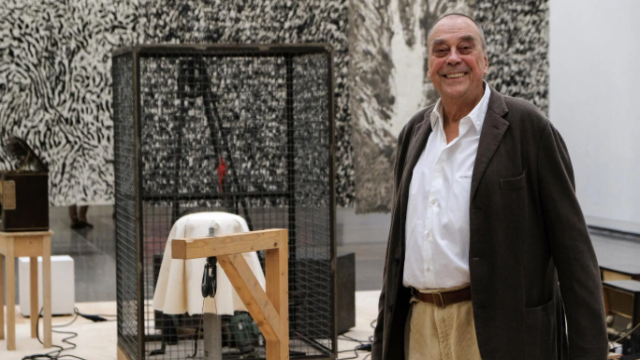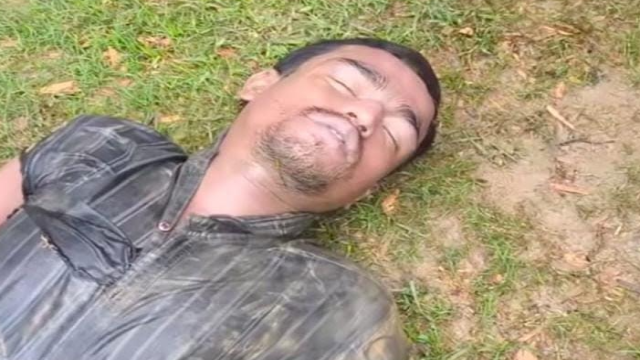BERLIN, June 11, (V7N) – German sculptor and installation artist Guenther Uecker, internationally celebrated for his captivating artworks created using thousands of nails, has passed away at the age of 95.
Uecker's distinctive works, which began emerging in the 1950s, involved hammering nails into various objects, including furniture, television sets, canvases, and even a tree trunk. Through this technique, he achieved undulating patterns, an illusion of movement, and intricate shadow plays. While he gained widespread fame for his unique method of "painting with nails" rather than a traditional brush, Uecker, widely regarded as one of Germany's most influential artists, later expanded his repertoire to incorporate other materials such as sand, stones, and ash.
Born on March 13, 1930, in Wendorf, located in what is now the eastern state of Mecklenburg-Western Pomerania, Uecker's formative years were profoundly shaped by the horrors of World War II. A few days before Germany's surrender, the ship "Cap Arcona" sank near his hometown, tragically claiming the lives of 4,500 concentration camp prisoners. Uecker himself assisted in burying the bodies that washed ashore, a traumatic experience he later explored in his work "New Wustrow Cloths."
A particularly poignant childhood memory involved a young Uecker, fearing the advancing Russian Red Army, nailing shut the door of his family home from the inside to protect his mother and sisters. He recounted this "panicked, instinctive act" in a 2015 TV documentary with public broadcaster Hessischer Rundfunk, noting its profound impact on him and its potential as a "key experience for my later artistic work."
Even as a child, Uecker was constantly drawing, much to the displeasure of his farmer father, who perceived his son as "a failure and not quite normal," as Uecker recalled in a 2010 interview with the Rheinische Post daily. In East Germany, Uecker began an apprenticeship as a painter and advertising designer in 1949, subsequently pursuing fine art studies. However, driven by a desire to study under his artistic idol Otto Pankok, Uecker fled East Germany in 1953 and continued his education at the University of Dusseldorf.
Uecker, who created his first nail paintings in the late 1950s, later explained that the nail appealed to him for its "intrusiveness, coupled with a strong potential for aggression," a quality he believed he also carried within himself. In 1961, he joined the art group Zero, founded by Otto Piene and Heinz Mack. The Zero group aimed to counter the devastation of World War II with a spirit of optimism and lightness, seeking to return art to its "absolute basics," as stated in their manifesto: "Zero is the beginning."
Uecker's artistic endeavors frequently engaged with contemporary issues. His ash paintings, for instance, were a direct response to the 1986 Chernobyl nuclear accident. Following xenophobic riots targeting migrants in a Rostock suburb in 1992, he produced the series "The Tortured Man," which was exhibited in 57 countries.
Uecker's works are prominently displayed in museums and galleries worldwide. Beyond traditional art spaces, he also designed cathedral church windows and the prayer room of Berlin's Reichstag building, which houses the lower house of the German parliament. When once asked if he was bothered by being known simply as the "nail artist," Uecker responded that he was not, stating, "Something like that is necessary for identification... People need a symbol, an emblem."
END/WD/RH/



























Comment: